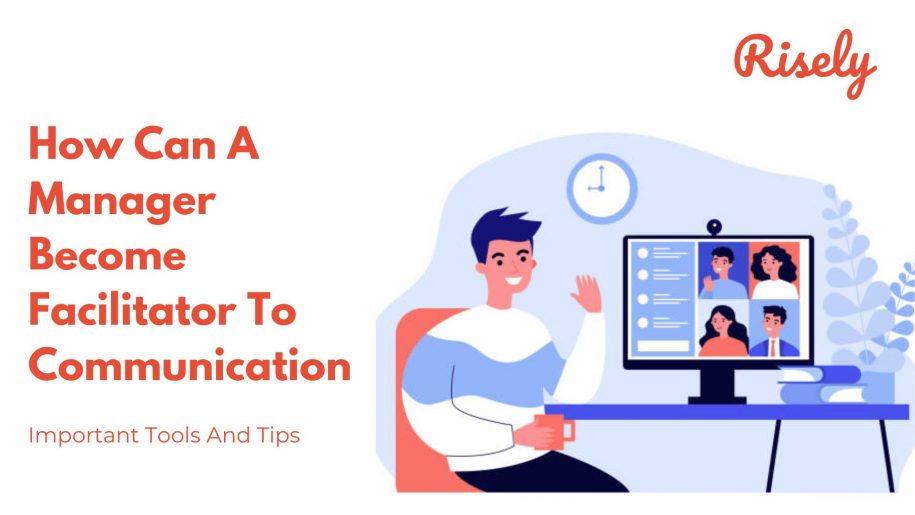How Can A Manager Become Facilitator To Communication
A big part of a manager’s role is to become a facilitator to communication between team members. This becomes increasingly important as a company scales and its employees are working in different parts of the country or globe. However, it can be difficult to know how to best do this. In this blog post, we have identified various responsibilities that come up when a manager tries to facilitate communication between his/her teams. We have also listed the tools which are proven effective and being used worldwide by managers to facilitate communications. Beyond that, we have given some short tips which can turn out to be extremely useful for managers when they are trying to become facilitators of communication within their teams and even their organization. But before that, it is important to understand what does it mean to facilitate communication. So, let’s figure that out first.What does it mean to facilitate communication?
Facilitating communication means providing an environment or a structure that allows for communication to happen. It’s the job of a facilitator to remove any obstacles that might prevent people from communicating effectively. This might include things like providing an agenda for a meeting, taking minutes, or creating a space where people can share their ideas. Facilitating communication is the process of removing barriers that prevent two or more people from exchanging information. A good way to do it is by eliminating distractions. Also, providing an environment that is conducive to communication, and making sure that everyone involved has all the information they need. Facilitation of communication is an important part of any workplace and can be especially helpful in cross-cultural contexts. By removing barriers and helping people to exchange information effectively, we can create a more productive and harmonious workplace which mainly is the agenda of any organization out there. An effective facilitator can make things like problem-solving, grievance handling, etc much easier than ever.What are the responsibilities of a facilitator?
The role of a communication facilitator is to ensure that communication is effective and efficient. To do this, the facilitator must understand the communication process and be able to apply the appropriate techniques to suit the situation. The main responsibilities of a communication facilitator are to:Define the communication process
The communication process is a necessary step for any organization. Still, it is often misunderstood and poorly implemented. A facilitator of communication is responsible for first defining the communication process to ensure that all stakeholders understand and agree to the terms. The communication process should include the following:- Define the objective of the communication
- Identify the stakeholders part of the communication
- The format of the communication
- The timing of the communication
- The channels of communication
Identify and assess the barriers to communication
A facilitator of communication is responsible for identifying and assessing the barriers to communication. The first step in overcoming any communication barrier is to identify it. Once the facilitator has determined what is preventing two or more people or teams from exchanging information, they can begin to assess the situation and find potential solutions. Some of the most common communication barriers are:- Language barriers
- Cultural differences
- Differences in education or experience
- Differences in opinion
- Emotional barriers
Manage the communication process
Defining the process of communication is not enough. Managers are responsible for managing this process too. They are also responsible for ensuring that all steps are taken to achieve the desired outcome. It is the job of the facilitator to make sure that the process they designed should come out to be effective for the organization. Managing the process also includes setting a set of ground rules for the same to avoid people from deviating from the process.Control the flow of information
A good communication facilitator will control the flow of information between two or more people. That doesn’t mean they become a filter or a bottleneck. On the contrary, they are responsible for making sure that everyone has a clear understanding of the discussion. The role of a communication facilitator is extremely important in business and organizational settings. Miscommunication can lead to confusion, frustration, and even conflict. A skilled facilitator can help to prevent these problems, and ensure that everyone involved in a discussion can participate fully and effectivelyFacilitate two-way communication
A facilitator of communication is responsible to facilitate two-way communication between sender and receiver. The facilitator’s role is to ensure that the communication process is effective and efficient. They do this by creating a safe and comfortable environment for both parties, removing any distractions, and establishing and maintaining clear communication channels. The facilitator must also be aware of their own biases and be able to set them aside to remain neutral. They must also be good listeners, and be able to understand the needs of both the sender and the receiver.How can a manager become a facilitator of communication between teams?
A manager’s job is to oversee the work that is being done and to make sure that everything is running smoothly. To do this, they need to be able to communicate effectively with their team. This means that they need to be able to not only actively listen to what their team is saying but also be able to relay information accurately to other teams. A manager needs to be organized and proactive to facilitate communication between teams. They need to set up regular meetings and make sure that everyone has the information they need to do their job. They should also be available to answer questions and assign tasks in a timely, efficient manner. There are many ways in which managers can become facilitators to communication but not all of them are effective. We have listed a few tools that managers can use to make sure that they are technically on the right path. Further, we have listed some tips for the managers that they can keep in mind while trying to become the facilitators of communication.Other Interesting Reads
Tools for facilitating communication
There are several tools available to help facilitate communication between teams as a manager. A facilitator usually uses these tools in combination with other strategies, such as positive reinforcement and negotiation, to achieve their goals. Some common tools being used by facilitators in the hybrid era of working are:Meetings
Facilitators use meetings to manage communication and set expectations for the team. They may also use them to resolve conflicts or resolve issues that have not been resolved during previous discussions. Meetings are the formal way of communication for organizations worldwide. Therefore, meetings are the first tool that managers should use to facilitate communication.Notes
Managers should make sure that everyone keeps notes of conversations or meetings. These notes can make recalling the outcomes of the conversations easy and it will also make it easy to guide future decisions and avoid confusion. This can help to ensure that all parties are aware of the discussion and understand the implications of their actions.Communication Circles
A communication circle is a group setting in which individuals discuss a particular topic collaboratively. It helps participants to share their ideas, insights, and frustrations in a controlled and confidential environment. Managers can also use these circles to effectively facilitate communication between teams.Collaboration tools
This allows employees to communicate with one another in real-time. That can be useful for resolving conflicts and solving problems and can also cut down miscommunication and misinterpretations. This chat software can also help managers to keep a track of the conversations between their teams which will help them to facilitate communication even better in the future. Slack, Huddle, Confluence are good examples of collaboration tools. They allow groups of people to share ideas and feedback quickly and easily.Video conferencing
This allows employees to see and talk to one another face-to-face, even if they are located in different parts of the world. This tool will be more effective for managers who either manage multiple regional offices or the ones who manage a hybrid or work-from-home setting workplace. Google meets, Zoom, Microsoft Teams, and Skype are good examples of video conferencing platforms used by managers worldwide to facilitate communication.Tips for effectively facilitating communication as a manager
To become an effective facilitator of communication, a manager can use these tips:- Make sure all participants understand the purpose and agenda of the meeting or the conversation.
- Make sure all participants have a chance to speak and provide their ideas and concerns openly and honestly. Pro tip: encourage the members who remain quite during meetings.
- Encourage constructive criticism while ensuring that it is delivered respectfully.
- Take into account other parties’ perspectives when making decisions about how to proceed with a conversation or meeting agenda item.
- Avoid making decisions about the direction or outcome of a conversation or meeting without consulting all participants.
- Follow up with employees after the meeting or conversation to ensure that they have received and understood the information discussed.
Conclusion
There’s no single answer to becoming a top facilitator of communication between teams. It takes hard work, dedication, and willingness to learn new tools and techniques. So, in this article, we discussed some proven strategies for managers to become effective facilitators of communication. The tools we shared above for facilitating communications are widely used and are proven effective worldwide. Therefore, we believe that using these tools and following these tips will help managers become effective facilitators of communication between their teams. It will also help them eliminate any problems which may occur due to inefficiency or lack of communication.Get more value out of conversations with the help of the free constructive feedback toolkit.
The free constructive feedback toolkit is an extensive guide that makes conversations helpful for managers with the help of tips and samples.
Other Related Blogs
Executive Communication Coach: When And How To Choose
Executive Communication Coach: When And How To Choose Good communication is a must for professional success. After all, half of people management is all about saying the right things in…
5 Unique Benefits Of Online Leadership Coaching
5 Unique Benefits Of Online Leadership Coaching Remember the days of leadership development being confined to a stuffy conference room filled with flipcharts and generic advice? Yeah, those days are…
Performance Management Training: Empowering Managers To Manage Better
Performance Management Training: Empowering Managers To Manage Better Remember that feeling of dread when you knew performance review season was rolling around? Yeah, us, too. For many employees, performance reviews…
Manager Development Goals And How To Reach Them: Opportunities And Areas To Focus On
Manager Development Goals And How To Reach Them: Opportunities And Areas To Focus On You’ve meticulously crafted a development program for your high-potential employees, but their managers just aren’t on…


